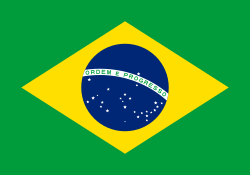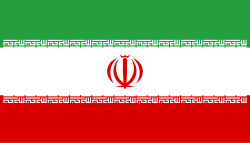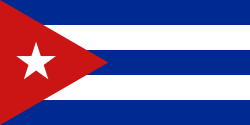Världsmästerskapet i futsal 2004
| Evenemangsfakta | |||
|---|---|---|---|
| Datum | 21 november–5 december 2004 | ||
| Arrangör | FIFA | ||
| Land | |||
| Spelplatser | 2 (Taipei och Linkou) | ||
| Deltagare | |||
| Kval | 86 | ||
| Nationer | 16 | ||
| Deltagande | 224 spelare | ||
| Statistik | |||
| Matcher | 40 | ||
| Mål | 237 (5,93 per match) | ||
| Publik | 50 923 (1273 per match) | ||
| Flest mål | |||
| Fyra | |||
| |||
| |||
Världsmästerskapet i futsal 2004 (officiellt FIFA Futsal World Championship Chinese Taipei 2004) spelades i Taiwan mellan 21 november och 5 december, 2004. Det var den femte upplagan av världsmästerskapet i futsal som Fifa anordnade. 16 landslag deltog i slutspelet som bestod av 40 matcher. De deltagande lagen, förutom värdnationen, i mästerskapet spelade ett kvalspel för respektive federation.
Mästerskapets slutsegrare blev Spanien som i finalen spelade mot Italien. Brasilien vann bronsmatchen mot Argentina.
Kvalificerade länder
| Federation | Turnering | Kvalificerade lag |
|---|---|---|
| AFC Asien | Asiatiska mästerskapet i futsal 2004 Spelades i Macao; 16–25 april 2004 | |
| CAF Afrika | Afrikanska mästerskapet i futsal 2004 Ingen värdnation, spelades mellan 9 juli och 3 september 2004 | |
| CONCACAF Nord– och Centralamerika samt Karibien | CONCACAF-mästerskapet i futsal 2004 Spelades i Costa Rica; 19–23 april 2004 | |
| CONMEBOL Sydamerika | Copa América i futsal 2003 Spelades i Paraguay; 26 augusti–1 september 2003 | |
| OFC Oceanien | Oceaniska mästerskapet i futsal 2004 Spelades i Australien; 25–29 juli 2004 | |
| UEFA Europa | Kvalspelet till världsmästerskapet i futsal 2004 (UEFA) Spelades på 10 platser i Europa. |
Spelartrupper
Varje lag fick ta med sig 14 utespelare samt en förbundskapten. Spelarna skulle vara anmälda till Fifa innan turneringens start.
Spelorter
| Taiwan | ||
|---|---|---|
| Spelort | Taipei | Linkou |
| Arena | NTU Gymnasium | Linkou Gymnasium |
| Kapacitet | 4 200 | 15 000 |
Gruppspel
Omgång 1
Grupp A
|
|
Grupp B
|
|
Grupp C
|
|
Grupp D
|
|
Omgång 2
Grupp E
|
|
Grupp F
|
|
Utslagsspel
| Semifinaler | Final | ||||||
| | 2 (4) | ||||||
| | 2 (5) | ||||||
| | 2 | ||||||
| | 1 | ||||||
| Bronsmatch | |||||||
| | 7 | | 7 | ||||
| | 4 | | 4 | ||||
Semifinaler
| 3 december 2004 | Brasilien | 2 – 2 (e f) | NTU Gymnasium, Taipei | |||
| 18:00 | Pablo Simi | (0 – 0) Rapport | Andreu Marcelo | Publik: 3 400 Domare: | ||
Falcão Neto Indio Euler Simi Schumacher | Straffsparksläggning 4 – 5 | Limones Kike Javi Rodriguez Torras Julio Andreu | ||||
| 3 december 2004 | Italien | 7 – 4 | NTU Gymnasium, Taipei | |||
| 20:30 | Vinicius Bacaro Fabiano Andre Vicentini Adriano Foglia Diego Giustozzi | (3 – 0) Rapport | Carlos Sanchez Marcelo Gimenez Fernando Wilhelm | Publik: 3 500 Domare: | ||
Bronsmatch
| 5 december 2004 | Brasilien | 7 – 4 | NTU Gymnasium, Taipei | |||
| 14:00 | Falcão Schumacher Euler Indio Franklin | (6 – 1) Rapport | Carlos Sanchez Diego Giustozzi | Publik: 3 500 Domare: | ||
Final
| 5 december 2004 | Spanien | 2 – 1 | NTU Gymnasium, Taipei | |||
| 16:00 | Kike Marcelo | (0 – 0) Rapport | Sandro Zanetti | Publik: 3 500 Domare: | ||
Utmärkelser
| Världsmästare i futsal 2004 | |||
|---|---|---|---|
 Spanien | |||
| Adidas Golden Ball | Adidas Golden Shoe | FIFA Fair Play award | |
Referenser
| |||||||||||||||||
Media som används på denna webbplats
Chinese Taipei Olympic Flag. According to the official website of Chinese Taipei Olympic Committee, Blue Sky(circle) & White Sun(triangles) above the Olympic rings is neither the National Emblem of the Republic of China, nor the Party Emblem of Kuomintang (KMT), but a design in between, where the triangles do not extend to the edge of the blue circle, as registered at International Olympic Committee in 1981 and digitally rendered in 2013. Besides, the blue outline of the five-petaled plum blossom is broader than the red one. Moreover, the CMYK code of the blue one and the Blue Sky & White Sun is "C100-M100-Y0-K0", and different from the Olympic rings (C100-M25-Y0-K0). Note that it's the only version recognized by IOC.
Gold cup
Silver cup
Simple black left arrow
Simple black right arrow
Flag of Iran. The tricolor flag was introduced in 1906, but after the Islamic Revolution of 1979 the Arabic words 'Allahu akbar' ('God is great'), written in the Kufic script of the Qur'an and repeated 22 times, were added to the red and green strips where they border the white central strip and in the middle is the emblem of Iran (which is a stylized Persian alphabet of the Arabic word Allah ("God")).
The official ISIRI standard (translation at FotW) gives two slightly different methods of construction for the flag: a compass-and-straightedge construction used for File:Flag of Iran (official).svg, and a "simplified" construction sheet with rational numbers used for this file.
The national flag of Kingdom of Thailand; there are total of 3 colours:
- Red represents the blood spilt to protect Thailand’s independence and often more simply described as representing the nation.
- White represents the religion of Buddhism, the predominant religion of the nation
- Blue represents the monarchy of the nation, which is recognised as the centre of Thai hearts.
Flag of Portugal, created by Columbano Bordalo Pinheiro (1857–1929), officially adopted by Portuguese government in June 30th 1911 (in use since about November 1910). Color shades matching the RGB values officially reccomended here. (PMS values should be used for direct ink or textile; CMYK for 4-color offset printing on paper; this is an image for screen display, RGB should be used.)
Simple downward triangular arrow (to replace "Arrow-down.svg", reason: inconsistent naming)
Författare/Upphovsman: Derived from image:soccer ball.svg, this version made by User:Ed g2s., Licens: CC0
A soccer ball with shade.
An icon that represents a gold medal
An icon that represents a silver medal
An icon that represents a bronze medal
Map of the members of FIFA according to their confederation, on the 1st January 2006 (before this date, see this map):
- CONCACAF – Confederation of North, Central American and Caribbean Association Football in North, Central and South America
- CONMEBOL – South American Football Confederation in South America
Bronze cup


























